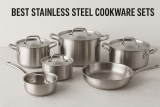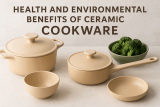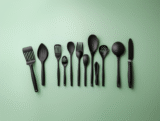This is your guide to commercial kitchens for food service providers. Check out the many FAQs and how-to guides that will show you the ways to create an efficient and safe kitchen environment.
Buying Guide & Advice
Why Non Toxic Kitchen Swaps MatterNon-toxic kitchen swaps make a real difference in your daily cooking. You cook multiple meals each week, so choosing ...
Wood vs Silicone Utensils: OverviewWooden utensils offer a classic feel in the kitchen. Many home cooks prefer them for their natural look and gentle ...
Understanding the Best Silicone Utensils for Healthy CookingBest silicone cooking utensils make healthy meals easier and safer because food-grade silicone ...
What Makes the Best Stainless Steel Cookware Sets Stand OutChoosing the Best Stainless Steel Cookware Sets can feel a little overwhelming when you’re new ...
Understanding the Rise of Best Ceramic Cookware 2025Interest in Best Ceramic Cookware has exploded going into 2025 because shoppers want pans that are ...
Why Bakery Equipment Matters for Your Business SuccessFinding the right bakery equipment is the first big step toward turning recipes into reliable ...
A quick scroll through cookware reviews shows the same complaints about traditional nonstick: mystery chemicals, peeling flakes, and skillets you have to ...
Why Choose the Best Dough Sheeter Machine for Home BakingSaturday morning in my kitchen used to look like a mini workout session—rolling pin in hand, ...
Baking bread is fun, tasty, and rewarding. It's also very labor intensive. However, with the help of technology, baking has become far less labor intensive. ...
Picture yourself on a busy Tuesday night, racing to get dinner on the table. You grab a glossy white ceramic skillet, toss in a drizzle of olive oil, and ...
In today’s world, where health-conscious cooking is becoming more of a priority, the importance of using non-toxic kitchen utensils cannot be overstated. The ...
In the quest for healthier living, every detail matters. This includes the cookware we use daily. In sum, the best non-toxic cookware options include ceramic ...














